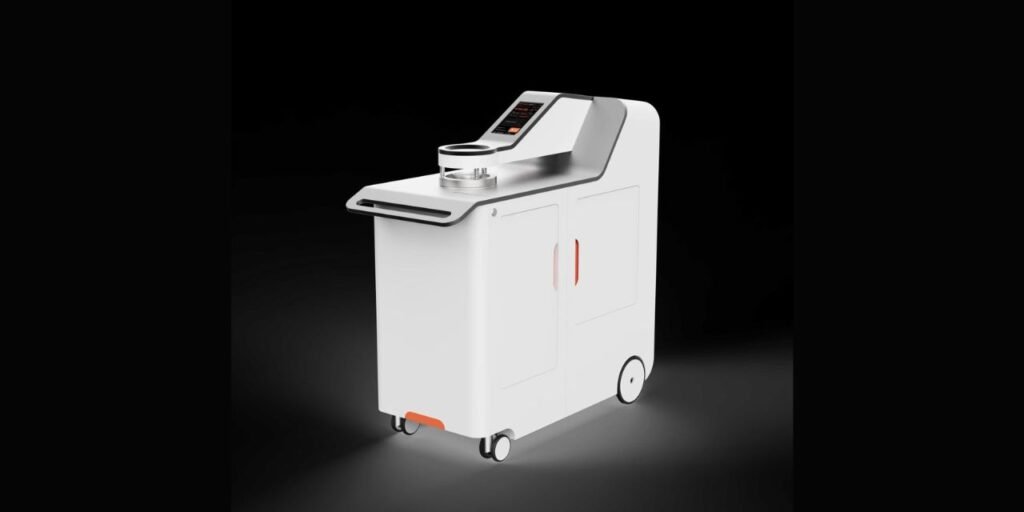
Introduction
Air permeability testers are essential instruments in various industries, including textiles, construction, and environmental engineering. These devices measure the ease with which air can pass through a material, providing crucial data for assessing the material’s breathability, insulation properties, and overall performance. This article delves into the principles, types, applications, and advancements of air permeability testers.
Principles of Air Permeability Testing

Air permeability is defined as the volume of air that can pass through a given area of a material under a specified pressure difference over a given period. The fundamental principle involves creating a pressure differential across the material and measuring the rate of air flow. The key parameters measured include:
- Pressure Differential (ΔP): The difference in air pressure on either side of the material.
- Air Flow Rate (Q): The volume of air passing through the material per unit time.
- Test Area (A): The specific area of the material being tested.
The air permeability (AP) can be calculated using the formula:
AP=𝑄𝐴⋅Δ𝑃AP=A⋅ΔPQ
where:
- 𝑄Q is the flow rate,
- 𝐴A is the test area,
- Δ𝑃ΔP is the pressure differential.
Types of Air Permeability Testers
Air permeability testers vary based on their design and intended application. Some common types include:
- Manual Air Permeability Testers:
- Features: Basic, cost-effective, require manual operation.
- Applications: Suitable for small-scale or preliminary testing.
- Automatic Air Permeability Testers:
- Features: Automated operation, high precision, and repeatability.
- Applications: Ideal for industrial and large-scale testing environments.
- Portable Air Permeability Testers:
- Features: Lightweight, easy to transport, and user-friendly.
- Applications: Used for field testing in construction, environmental studies, and quality control.
- Laboratory Air Permeability Testers:
- Features: High accuracy, sophisticated controls, and data logging capabilities.
- Applications: Research and development, quality assurance in manufacturing.
Applications of Air Permeability Testers
Air permeability testers are used in a variety of industries to ensure product quality and performance. Key applications include:
Textile Industry:
- Purpose: Assess the breathability and comfort of fabrics, particularly in sportswear, medical textiles, and outdoor clothing.
- Example: Ensuring that materials used in protective clothing have adequate air permeability for comfort and safety.
- Construction Industry:
- Purpose: Evaluate building materials such as concrete, insulation, and membranes for air tightness and thermal performance.
- Example: Testing the air permeability of building envelopes to improve energy efficiency.
- Filtration Industry:
- Purpose: Measure the efficiency of filter media in allowing air flow while trapping particles.
- Example: Ensuring air filters in HVAC systems meet performance standards.
- Automotive Industry:
- Purpose: Test the air permeability of upholstery and interior materials for comfort and durability.
- Example: Evaluating the breathability of car seat fabrics.
- Environmental Engineering:
- Purpose: Monitor soil and environmental materials for air flow characteristics related to soil health and pollutant dispersion.
- Example: Assessing the permeability of soil layers in environmental impact studies.
Advancements in Air Permeability Testing
Recent advancements in air permeability testing technology have improved the accuracy, efficiency, and applicability of these instruments. Notable advancements include:
- Digital Integration:
- Benefit: Enhanced data accuracy and ease of data management through digital interfaces and software integration.
- Feature: Real-time monitoring, data logging, and analysis capabilities.
- Automated Calibration:
- Benefit: Increased precision and reduced human error through automated calibration processes.
- Feature: Self-calibrating instruments that adjust settings based on predefined standards.
- Improved Sensitivity:
- Benefit: Ability to measure very low levels of air permeability with high precision.
- Feature: Advanced sensors and micro-electromechanical systems (MEMS) technology.
- Portable and Wireless Devices:
- Benefit: Greater flexibility and convenience in field testing.
- Feature: Wireless communication and portable designs for on-site testing.
- Environmental and Sustainability Focus:
- Benefit: Addressing environmental concerns and regulatory standards.
- Feature: Devices designed to test materials for sustainable building practices and reduced environmental impact.
Conclusion
Air permeability testers play a crucial role in various industries by providing valuable data on the breathability and performance of materials. With advancements in technology, these instruments have become more accurate, efficient, and versatile, supporting a wide range of applications from textiles to construction. Understanding the principles and types of air permeability testers helps professionals select the right tool for their specific needs, ensuring product quality and compliance with industry standards.
